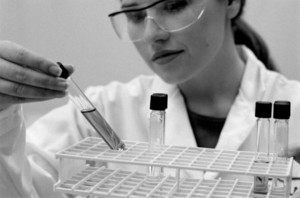In an article in The New England Journal of Medicine (NEJM) by Ellis F Unger, Aliza M Thompson, Melanie J Blank, and Robert Temple, published on 6 January 2010 at NEJM.org, it is stated that it is time for a re-evaluation of erythropoiesis-stimulating agents (ESAs).
Time for a re-evaluation of ESAs
Biosimilars/Research
|
Posted 01/02/2010
 0
Post your comment
0
Post your comment

Epoetin alfa was approved in 1989 by the FDA for the treatment of anaemia associated with chronic kidney disease “to elevate or maintain the red blood cell level . . . and to decrease the need for transfusions”. Although epoetin alfa and darbepoetin alfa, a related erythropoiesis-stimulating agent (ESA) approved in 2001, have been widely accepted for this indication, optimal haemoglobin targets have never been established. A number of small studies conducted in the late 1980s supported the concept that higher haemoglobin concentrations are beneficial; the use of ESAs for anaemia in patients with chronic kidney disease was purported to improve patients’ quality of life, cognitive function, energy, and well-being and to ameliorate left ventricular hypertrophy. Subsequently, randomised trials have endeavoured to show that using ESAs to raise haemoglobin concentrations to higher targets improves clinical outcomes. Unfortunately and unexpectedly, all results have suggested the opposite.
Ms Unger et al. discuss the Normal Hematocrit Study, the Correction of Haemoglobin and Outcomes in Renal Insufficiency (CHOIR) trial, the Trial to Reduce Cardiovascular Events with Aranesp Therapy (TREAT), and the Medical Outcomes Study 36-Item Short-Form General Health Survey (SF-36). According to them, the Normal Hematocrit Study, the CHOIR trial, and TREAT show that concentration-concentration targets of 14.0, 13.5, and 13.0 g per decilitre — and the ESA regimens used to achieve them — are harmful. It remains to be shown in a controlled trial that assignment to any higher target, as compared with any lower target, or to ESA dosing regimens necessary to attain these targets prevents cardiovascular events or indeed does not increase their likelihood.
According to the authors, it is time to establish through randomised trials the optimal haemoglobin target, dosing algorithm, and monitoring approach for patients with anaemia from chronic kidney disease. Clearly, more conservative haemoglobin targets — well below 12 g per decilitre — should be evaluated. Beyond lowering haemoglobin targets and reducing doses of ESAs, it is also possible that more frequent haemoglobin monitoring and more cautious dosing algorithms — including computer-directed algorithms — might reduce oscillations and overshoots in the haemoglobin concentration and improve outcomes. These approaches should be evaluated as well. The FDA anticipates convening a public advisory committee meeting in 2010 to re-evaluate the use of ESAs in the treatment of anaemia due to chronic kidney disease.
Reference:
Ellis F. Unger, Aliza M. Thompson, Melanie J. Blank, and Robert Temple. Erythropoiesis-Stimulating Agents — Time for a Reevaluation. NEJM. 2010 January 6.
Source: NEJM
News
FDA approves six denosumab biosimilars
EMA recommends approval for four biosimilars targeting three therapies
General
Samsung Bioepis wins Pyzchiva case; Regeneron patent rulings threaten foreign biosimilars
Chinese biosimilars go global: growth, partnerships, and challenges
What is the future for the US biosimilar interchangeability designation

Biosimilars/Research Posted 05/06/2025
Biosimilar clinical efficacy studies: are they still necessary?

Biosimilars/Research Posted 27/05/2025
The best selling biotechnology drugs of 2008: the next biosimilars targets








Post your comment